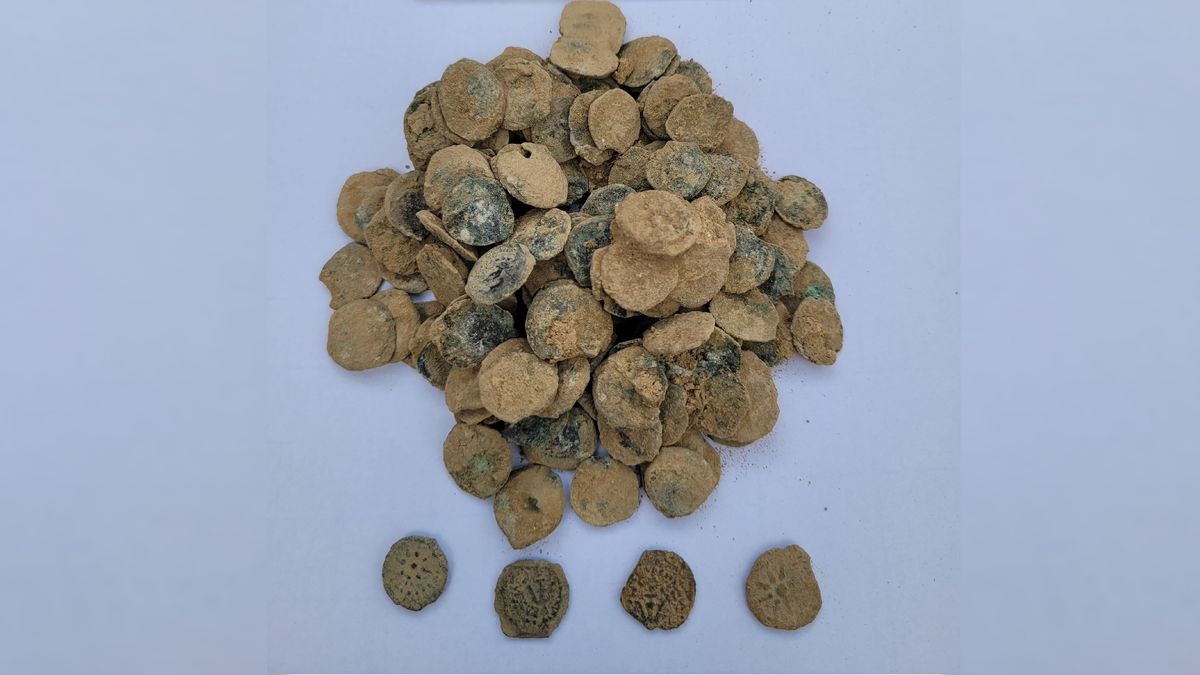A 2,100-year-old hoard of 160 coins has been discovered at an archaeological site in the Jordan Valley.
The coins date to the reign of Alexander Jannaeus (circa 103 to 76 B.C.), who was both a high priest and a king of the Hasmoneans — a dynasty of Jewish kings who ruled a kingdom that encompassed what is now Israel, the West Bank and parts of other neighboring areas. This kingdom started in 167 B.C., when Jewish inhabitants of the area rose up against the Seleucid Empire and succeeded in taking over parts of it. During the first century B.C., the Roman Republic conquered the Hasmoneans’ territory and allowed King Herod to establish his own kingdom.
The coins have eight pointed stars engraved on them and contain both Aramaic and Greek inscriptions, which give the name of Alexander Jannaeus and say the coins were minted in the 25th year of his reign, the University of Haifa reported in a translated statement. This type of coin was minted in 80 or 79 B.C.
“It is a very common coin type,” Shay Bar, an archaeologist at the University of Haifa who is leading the team, told Live Science in an email. However, Hasmonean coins aren’t typically found in large hoards in the region, making this finding rare, he noted.
Related: Evidence of Hanukkah’s Maccabee rebellion unearthed in Israel
Why was the hoard left in the Jordan Valley?
Archaeologists found the hoard by a collapsed wall in the food preparation area of a building, which may hint at why it was buried there. The building was at the archaeological site of Rujm es-Sia in the Jordan Valley, which was a way station for people traveling to the nearby Hasmonean fortress of Sartaba, the statement said.
However, why the hoard was placed there is unknown, Bar said.
“The question of deposition intent is very hard to answer in archaeology,” Bar said. It may have been hidden during a troubled time, Bar said. It’s also possible that it wasn’t hidden at all; it may have been part of a cash desk for people selling food, Bar said. Yet another possibility is that it was placed in the wall as an offering or foundation deposit, something that was rarely done at this point in time, said Bar.
Excavation of the site and investigation of the remains are ongoing. An analysis of the coin hoard will be published in the future.


